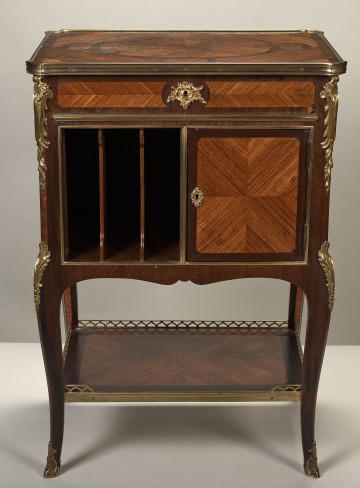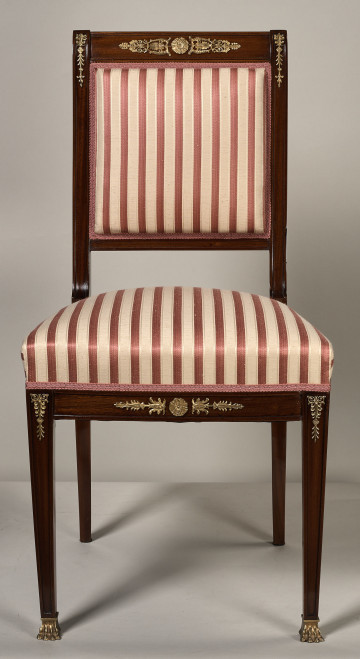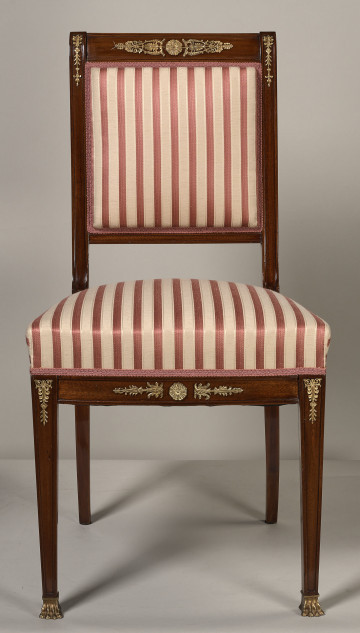
Cabinet
18th century
Castle Museum in Łańcut
Part of the collection: Meble i wyposażenie wnętrz
At the end of the 17th century, a new type of furniture appeared in France, namely the chest of drawers. In the18th century, it spread throughout Europe. The name, derived from the Latin comodus which passed into the French as commode, means convenience. The chest of drawers evolved from the earlier cabinet, in the compartments and drawers of which valuable or important objects were stored. The chest of drawers is a chest furniture with drawers or can also have the form of a cupboard with doors. One of the older forms of the chest of drawers, modelled on the shape of a sarcophagus and therefore called ‘en tombeau’, was introduced by the court cabinetmaker and furniture designer André Charles Boulle during the regency of Philippe d’Orléans, who ruled in place of the underage King Louis XV. The Rococo ‘en tombeau’ chest of drawers acquired by the Castle Museum in Łańcut is a rather massive piece of furniture with three drawers, with bulging, concave-convex outline of the walls decorated with veneer and marquetry as well as gilded bronze castings: handles of drawers, key-hole borders, front vertical edges, lower ‘apron’ and ‘feet’ of the legs (slightly undercut). The wooden top with profiled edge is covered with marquetry. The chest of drawers probably dates from the second quarter or mid-18th century, its author is unknown. Teresa Bagińska-Żurawska https://orcid.org/0000-0002-9243-3967
Author / creator
Dimensions
height: 81 cm, width: 106 cm
Object type
Furniture and interior fittings
Technique
inlaying
Material
bronze, wood
Creation time / dating
Creation / finding place
Owner
Castle Museum in Łańcut
Identification number
Location / status

18th century
Castle Museum in Łańcut

1st half of the 20th century
Castle Museum in Łańcut

1st half of the 20th century
Castle Museum in Łańcut
DISCOVER this TOPIC
National Museum in Lublin
DISCOVER this PATH
Educational path